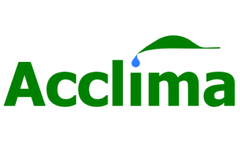Irrigation Water Management Articles & Analysis
18 articles found
The project has as its overall aim to increase climate resilient agricultural productivity and food security, with a specific objective to increase the water productivity and profitability of smallholder farmers in Mozambique, prioritizing small (family sector) farmers to increase food and nutritional security. This project will demonstrate what the best combinations are of adoption strategies ...
This reduces waste, optimizes nutrient uptake, and promotes stronger, healthier crops. Salinity Management: In drought-prone regions or areas with saline irrigation water, managing salt buildup is crucial. ...
Jason Krutz, and I had started programs where we demonstrated irrigation water management (IWM) practices on farms using a paired-field comparison. These tracked two fields: a field managed with IWM practices and a control field managed by a farmer. We were able to document that IWM practices could achieve a ...
As farm operations have grown and their monitoring needs have evolved over the years, Briggs and Eggers Orchards have continued to add more field stations and sensors to their flexible network. To help with irrigation scheduling, soil moisture monitoring components were integrated into the network to give managers valuable information into how much ...
As Pakistan is currently facing a severe shortage of irrigation water, this paper analyzes the determinants of water scarcity and its impact on the yield of cereal crops (wheat, maize and rice), household income, food security and poverty levels by employing the propensity-score-matching approach. ...
Water, one of the most crucial inputs of irrigation, should be utilized judiciously to identify appropriate strategies for planning and management of irrigated farmland. The present study was conducted for the crop maize (Zea mays), grown mainly in the rabi-season (July–October), to evaluate the ...
Because of low available water holding capacities and shallow root-limiting layers in many soils, irrigation management is difficult. Water quality and water use efficiency impacts under irrigation are poorly understood, but comprehension is necessary if conversion from groundwater to surface ...
Egypt’s water resources are severely constrained. This calls for increasing the water use efficiency by improving irrigation management practice, as the agriculture sector is the main user of water resources. Much of the irrigation infrastructure is elderly and in need of rehabilitation. ...
Up to the early 1980s, operations and maintenance for irrigation systems was highly centralised, but this was imposing an increasing institutional and financial burden on the government. Contributing factors were: very low ratio of billing and collection rates or no collection at all; very high water consumption, even wastage; no cost recovery for investment; and no local interest by the farmers ...
Sustainable irrigation water management should simultaneously achieve two objectives: sustaining irrigated agriculture for food security and preserving the associated natural environment. A stable relationship should be maintained between these two objectives now and in the future, while potential conflicts between these ...
Irrigated agriculture is the most significant user of fresh water in the world and, due to the large area occupied, is one of the major pollution sources for the water resources. This book comprises 12 chapters that cover different issues and problematics of irrigated agriculture: from water use in different ...
Abstract Irrigation water management has to do with the appropriate application of water to soils, in terms of amounts, rates, and timing to satisfy crop water demands while protecting the soil and water resources from degradation. In this regard, sensors can be used to monitor the soil ...
Participatory Irrigation Management (PIM) was formally adopted in Thailand in 2004. The involvement of farmers in water management decision making is necessary to meet the implementation challenges of this initiative. ...
Abstract Irrigation water management practices could greatly benefit from using soil moisture sensors that accurately measure soil water content or potential. ...
In the late 1990s, like many other developing countries, Haiti started a process of devolving responsibilities over irrigation scheme management to water users’ associations. In this paper, a three-step methodology for institutional analysis is applied to investigate the functioning of this new setting in Haiti, using three ...
The study shows that adoption of drip irrigation technology has resulted in significant external and private benefits. ...
This paper explores the long-term development of irrigation system management, and looks at the influence of legislation, irrigation system size, scalar stress and polarized land tenure in the existence and success of self-management. ...
Accurate crop development models are important tools in evaluating the effects of water deficits on crop yield or productivity. The FAO AquaCrop model predicts crop productivity, water requirement, and water use efficiency (WUE) under water-limiting conditions. ...







